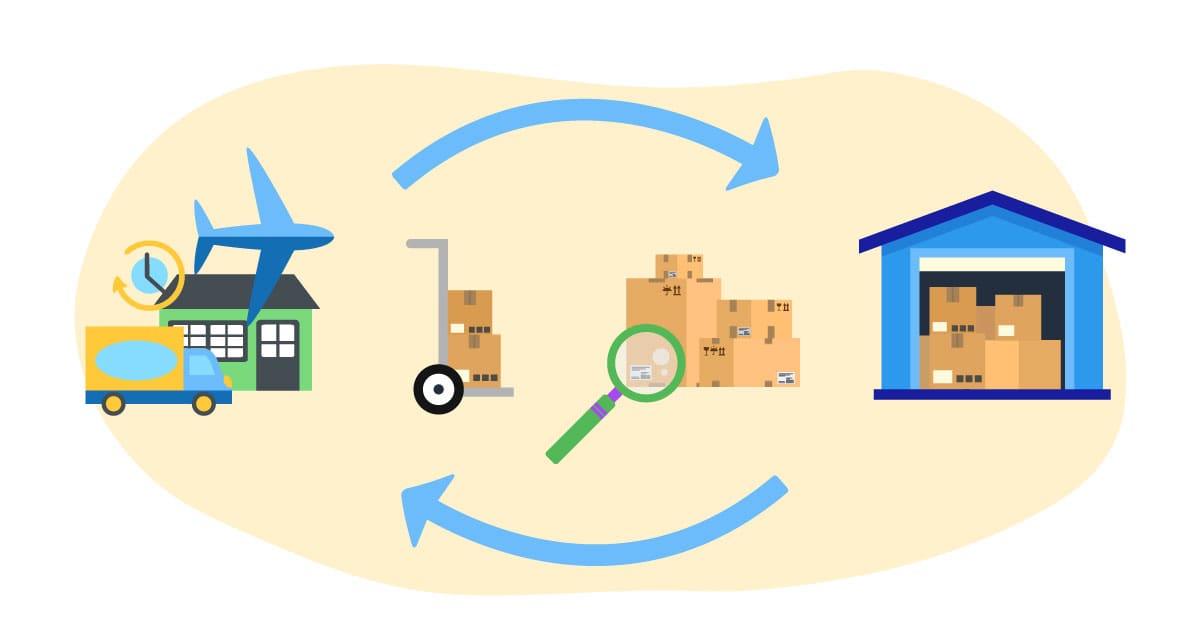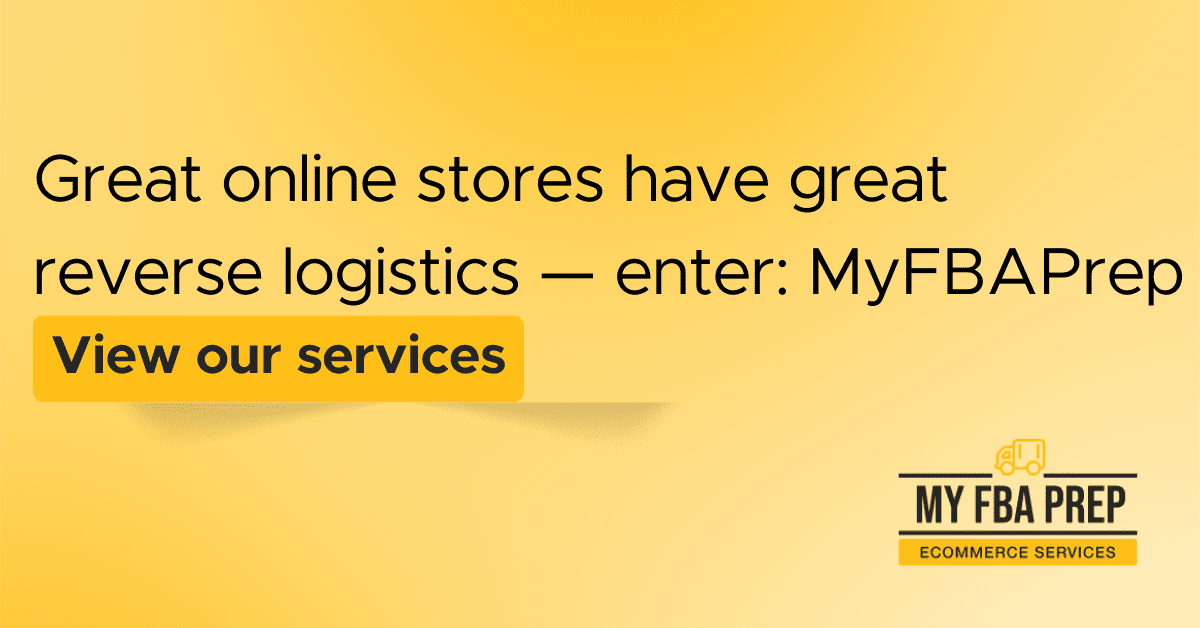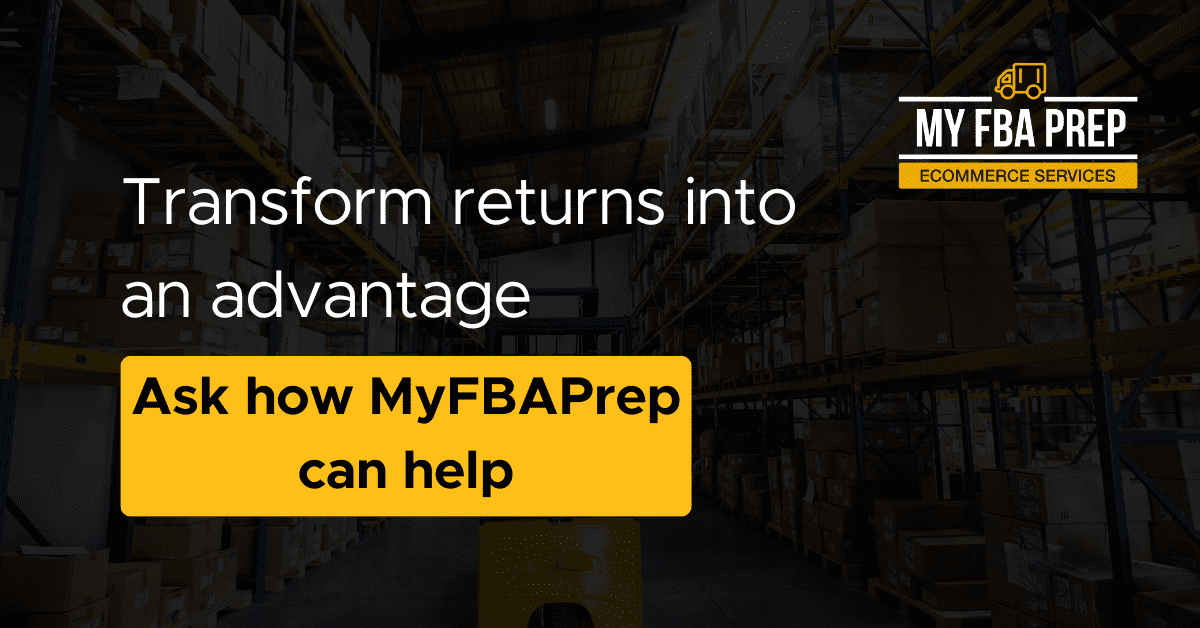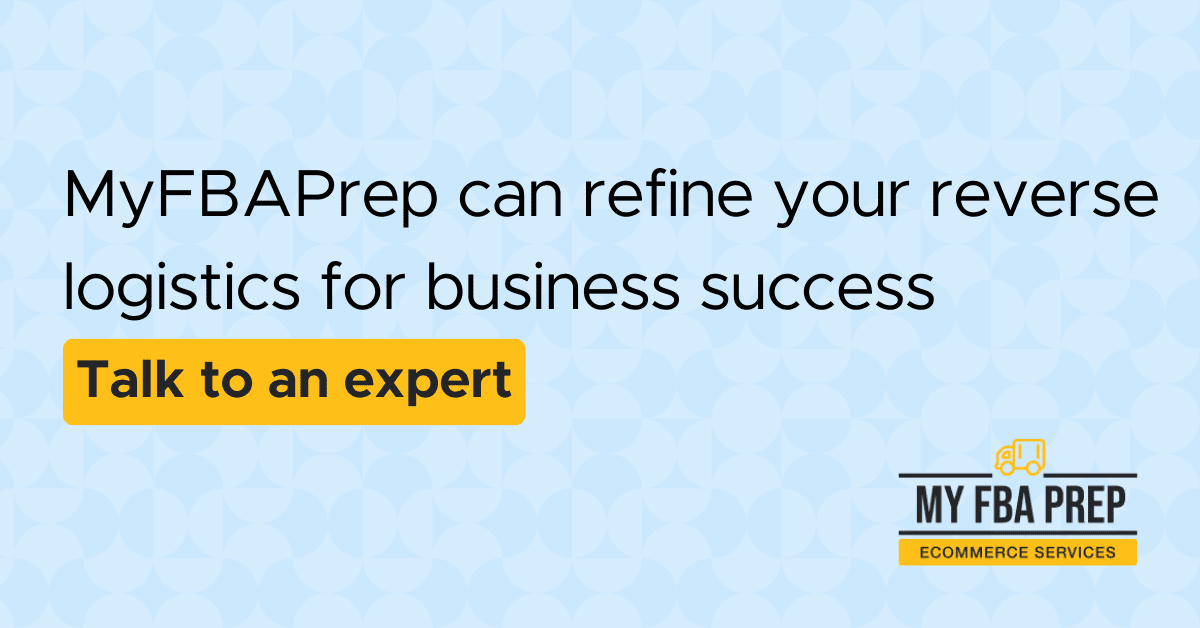
Reverse Logistics: Best Practices to Make Returns Your Competitive Advantage

A quick browse through online marketplaces clearly shows that eCommerce is booming. Sellers and brands abound, and orders constantly pour in fast. In fact, the global eCommerce market is expected to reach $8.148 billion by 2026.
Unfortunately, the fairy-tale ending remains out of reach: Goods are regularly sent back in droves, with 30% of online orders returned on average.
If your returns stats look similar, don’t despair. With the right setup, you can hone your reverse logistics to stay in your customers’ good graces and inspire future sales. In this post, we’ll dive into what reverse logistics is and unveil the steps to build a top-notch returns process.
What are reverse logistics?
Reverse logistics, commonly referred to as a returns process, are a supply chain management feature that involves “reversing” the fulfillment process by shipping goods back to the retailer. Returns often take place through courier pickup, parcel hub drop-off, or posting items back to the business’s distribution center.
The returns process: To upgrade or not to upgrade?
You’ll see some telltale signs if your returns process needs refining. Let’s run through the most common indications that it’s time to hone your operations.
Sign #1 Customers are complaining
Time is precious, and no one likes to waste it. So, it’s easy to see why 28% of shoppers cited returns taking too long as their biggest gripes, while 24% said it was being unable to track or having to repackage their returns.
Whether it’s having to chase updates or meet complicated repackaging requirements, delays and inconveniences create a poor customer experience and discourage return visits to your store. So, if shoppers vocalize dissatisfaction with your returns process, it’s time for a makeover.
Sign #2 The process costs more than it’s worth
Just like shipping costs, returns impact your bottom line, and sometimes the resources required to process them make no sense for either party. This is why retailers like Walmart and Amazon have turned to refunding shoppers’ money and encouraging them to donate the items instead of sending them back.
So, if you sell low-ticket items or goods that can’t be resold for sanitary reasons, reassess what qualifies for returns.
Sign #3 Your returns process is unorganized and lengthy
If you have high order volumes or peak seasons with a small team, returns can quickly become overwhelming — and unmanageable.
So, if returns are delayed or, worse, misplaced or forgotten, you’ll need to streamline your returns process stat.
Ready to upgrade your returns process? Learn how MyFBAPrep can give you a boost.
How to craft an impeccable returns process
Spotting areas for improvement in your returns logistics is a golden opportunity to land in your customers’ good books. With a little effort, you can differentiate your brand and keep sales flooding in. Let’s break down the steps to take.
Refine your shopping experience
No one likes returns, especially your customers. More than half of surveyed U.S. consumers said they would do “nearly anything” to avoid having to return products, and 67% stated it’s the worst part of the shopping experience. Yet, in the same breath, 74% of shoppers have experienced buyer’s remorse after making a purchase, and 58% admit to habitually buying more than they intend to keep (aka bracketing). Clearly, something is missing in the buyer’s journey.
The moral of the story? It pays to help shoppers make smarter shopping decisions to prevent returns. So, before you jump into upgrading your reverse logistics, do some digging to learn what sparks returns in your business and when. Then, find ways to improve the customer experience and decision-making process to eradicate buyer’s remorse and reduce returns. For instance, look for:
- The most common reasons for returns
- Products with the highest returns
- Seasons or months with the greatest return rate
- Products with the most instances of bracketing
Then, based on your findings, you could:
- Launch an AI to help shoppers find products that best fit their needs
- Improve your product descriptions, images, and videos
- Implement customer suggestions and feedback into your products and website
Be open about your return policy
Honesty is the best policy when it comes to communicating your criteria for returns. It’ll inform your customers of essential information immediately, reducing the number of instances when you need to step in. So, make sure your return policy is:
- Clear: Provide transparency in your terms, including what you’ll allow, the return options shoppers can use, when, how you’ll refund, and an approximate window. Also, if you know returns will take longer than usual due to an event or season (e.g., a warehouse move or Black Friday Cyber Monday prep), communicate this upfront.
- Accommodating and customer-focused: If you can afford it, offer a longer return window. Provide labels and packaging the customer will need, along with clear instructions, if necessary.
- Flexible: Offer multiple ways for shoppers to send back items. For example, 61% of shoppers prefer returning goods in-store under the BIPOS trend.
- Well distributed: Customers should be able to find your return policy easily. Place terms and conditions for your reverse logistics in multiple areas, including your social media website and product descriptions.
Work with a 3PL to execute returns efficiently
Backlogs in your returns process can frustrate customers and hold up sellable inventory. However, when you have a ton of tasks to manage, a slowdown is inevitable. That’s the time to look into partnering with a fulfillment service like a 3PL or 4PL. The right provider can:
- Pick up customer returns and distribute them to appropriate warehouses
- Confirm returned orders
- Check the condition of the goods
- Repackage items for sale
For best results, vet your suppliers thoroughly, including asking for their performance records, testimonials, and experience.
Offer free returns (if feasible)
The customers have spoken — 81% of shoppers desire free, simple returns. To boost consumer happiness without obliterating your margins, you’ll need to be strategic about how you offer returns at no charge. For example, it could be wise to adjust your pricing model, or you could provide free returns and then focus on pushing repeat orders to offset costs. Whatever approach you choose, ensure the numbers make sense.
Assess and adjust your strategy regularly
Fluctuations are common in the online shopping world. So, assess whether your returns operations match the current needs of your customers and the market.
For example, a few years ago, contactless returns had low popularity. But during the Covid-19 pandemic, they spiked and are now an included option for shoppers. “Buy Online, Return In Store” (BORIS) is also gaining ground in the post-pandemic era, with 62% of shoppers more likely to make an online purchase if BORIS is available.
To ensure your returns process meets customer wants and needs, analyze your returns data regularly and gather your customers’ opinions on what you can improve.
Scaling your eCommerce business? Ensure your fulfillment is up to the task.
3 examples of stellar returns processes
Amazon
Winning feature: Paperless returns with immediate payouts
The eCommerce behemoth has struck again with a returns process so smooth, it wows even longstanding customers. Amazon adopted paperless and packaging-free return options, along with payouts while goods are in transit to Amazon’s warehouse and issuing returns without requiring the goods back. In short, Amazon’s returns process wins time and time again.
Key takeaways:
- The simpler your returns process, the better.
- Reimburse returns as soon as possible.
- Write off items if the return costs make resale unprofitable.
PrettyLittleThing (PLT)
Winning features: Simple process with numerous drop-off hubs and carrier options
PLT is known for more than its fashionable clothing: Their fuss-free, paperless returns process, and readily available customer support remove the hassle of sending back items. PLT offers fast support to keep customers coming back.
Key takeaways:
- Provide reusable packaging.
- Go paperless for returns.
- Offer multiple returns options.
Tediber
Winning features: Extended return window and at-home collection
Returning a bulky item can be challenging, but Tediber has found a way to make the process painless with easy appointment booking to arrange a collection from home. Tediber goes above and beyond by allowing shoppers to try their mattresses for 100 days risk-free instead of the usual 14 days.
Key takeaways:
- Adopt a flexible return policy.
- Have a strategy that ensures the item is in good condition before you accept returns.
- Know what you’ll do with the returned items you can’t resell (e.g., give to charity).
Master your returns logistics
No matter what stage you’re at in your eCommerce journey, your returns process doesn’t have to be stressful or complex, as that harms your brand image. With the right tools and approach, your reverse logistics can inspire customers to continue shopping with you.
When it comes to returns, prevention is better than cure. Hone your strategy to keep your margins intact and customer satisfaction high. However, returns are unavoidable returns, so build your process around your customers, making it easy to understand and simple to execute.
Provide omnichannel returns and be ready to jump in and help shoppers quickly if they decide to part ways with their goods. Put these measures in place, and you’ll be able to replace those returned orders with the new traffic and sales your returns process drives.





